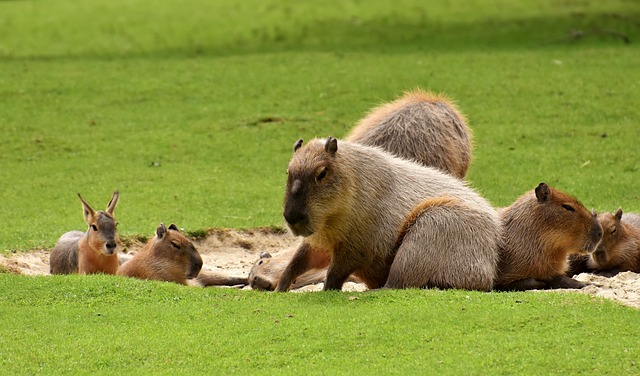Capybaras, the world’s largest rodents, hail from South America and are typically found in regions stretching from Panama to Argentina.
They thrive in habitats with abundant water sources, such as rivers, lakes, swamps, and marshes.
Capybaras are limited to zoos and private collections in Italy, where they are kept in controlled environments that mimic their natural habitat.
Their appeal as exotic pets has grown, but their care requires specific conditions that are difficult to maintain.
The climate and ecosystems in Italy differ vastly from the capybara’s natural home, making it unsuitable for their free-ranging existence.
Environmental conditions and local legislation are pivotal in determining where a species can live.
Introducing an exotic species like capybaras into Italy’s ecosystem could disrupt local flora and fauna, leading to unintended ecological consequences.
Such introductions are typically regulated to prevent harm to indigenous species and habitats.
Capybaras in Italy
Capybaras are not native to Italy and are typically not in the wild in this European country.
Native Habitat and Distribution
The capybara (Hydrochoerus hydrochaeris) is native to South America. They predominantly inhabit savannas and dense forests near bodies of water, such as rivers, lakes, swamps, and marshes.
The species’ range extends from Colombia and Venezuela in the north to Uruguay and northeastern Argentina in the south.
Exotic Pets and Private Collections
In Italy, capybaras may be present as exotic pets or within private collections.
Restrictions on the ownership of exotic animals vary; possessing capybaras might require special permits due to European Union regulations on the keeping of non-native species, which aim to protect indigenous wildlife and prevent the establishment of invasive species.
Cases of capybaras in Italy are sparse and generally tied to licensed exotic animal holders or zoological institutions.
Ecological Impact
Capybaras, native to South America, are not indigenous to Italy. Their introduction could disrupt local ecosystems.
Potential Environmental Concerns
Competition with Native Species: Capybaras may compete for food and habitat resources with native Italian species.
- Predation: These large rodents could become prey to native predators, altering predator-prey dynamics.
- Habitat Alteration: Capybaras are known for their effect on vegetation, which could lead to habitat modifications affecting other species.
Control and Management Strategies
Regulation of Importation: Strict enforcement of laws to prevent unauthorized introduction of capybaras into Italy.
- Monitoring and Research: Continuous ecological studies to understand the potential impacts of capybaras on Italian ecosystems.
- Active Management: If capybaras were found in the wild, swift action would be needed, including potential removal or control of the population.



